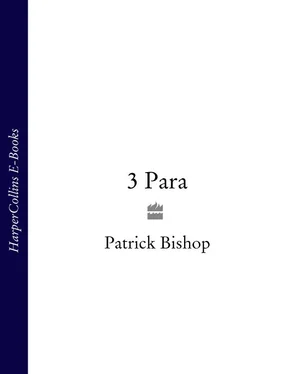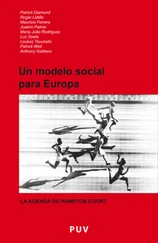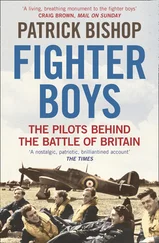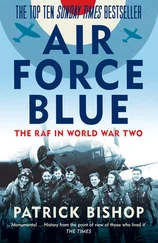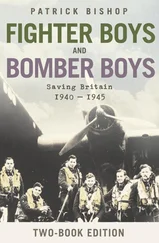Whatever its tactical limitations in southern Afghanistan, Tootal felt that the psychological bolstering parachuting provided was a great preparation for what the Paras would face there. The nerves experienced waiting at Bastion to lift off to what might well be a ‘hot’ landing zone struck him as very similar to the low hum of dread that preceded a difficult jump. ‘Parachuting doesn’t allow you to conquer fear, but the experience of doing difficult parachute descents does give you a familiarity with managing it. Lots of people said that and I felt it myself. Regardless of what happened, I was fairly convinced, based on my experiences of parachuting, that I would do the right thing.’
Climbing out of the back of a Chinook into a Taliban ambush, ‘you might be thinking of the implications of being killed or wounded, but I think the biggest concern is how you’re going to perform. Are you going to freeze?’
The ‘green on – go’ reflex was the cure for that. ‘It doesn’t matter if we haven’t parachuted for years in an operational environment … it’s what that training experience gives you – the type of soldier it breeds.’
The toughness of the training and the ruthlessness of the selection create some marked characteristics. One is an intense feeling of camaraderie that blows down social barriers. Class and background seem unimportant. There is a feeling of communal concern and mutuality that is hard to find in life beyond the barrack walls.
Surviving the process, making the cut, also encourages feelings of superiority. Paras love being Paras. ‘They are the best at what they do,’ said Andy Mallet. ‘It doesn’t matter what anybody else says. I know, having served with the Third Battalion, The Parachute Regiment, we are the best regiment in the army without a shadow of a doubt.’
‘You have got the Guards regiments which are hundreds of years old, which can hark back to Waterloo, but that doesn’t matter,’ said Captain Nick French, the Mortar Platoon commander. ‘It doesn’t mean anything to you. We can hark back to victories in the Second World War, Suez, Northern Ireland, the Falkands. Instead of talking about history, the blokes make history. That is why we are so proud. We have proved ourselves time and time again as opposed to relying on some mystique that was created at Waterloo. That’s why the blokes are so fiercely proud of who they are.’
Private Peter McKinley, who won a Military Cross in Helmand, says simply, ‘We are airborne gods. The whole army hates us because we are fucking mega. They hate us for the way we act, the way we walk and hold our heads high.’
To be an elite requires someone else to be crap. In the eyes of the ultras of the Parachute Regiment, such as McKinley, that designation applies to everyone else in uniform. The phrase ‘crap hat’ is used for all who do not belong to the Parachute Regiment. No one knows where it comes from. It is usually abbreviated to just ‘Hat’. Nick French’s mobile phone tone is a recording of an old-fashioned voice declaring, ‘Paras believe in themselves and each other – everyone else is a crap hat,’ lifted from a 1980s documentary.
Para pride was on full display one wintry night at Colchester Barracks in 2007 when the 3 Para boxing team was taking on 2 Battalion, The Yorkshire Regiment – the Green Howards – in the semi-finals of an army boxing contest. On one side of the ring sat the ‘Toms’, as the foot soldiers of the Parachute Regiment call themselves. On the other were the Green Howard ‘Hats’. The officers of the two battalions, poured into scarlet bum-freezer mess jackets and tight black trousers, sat facing each other across the canvas. It was a late Victorian scene with only a pall of cigar smoke hanging from the rafters missing from the picture. ‘Drop the Hat! Drop the Hat!’ yelled the Toms. 3 Para’s fighters obliged, winning all but one of the bouts. In the seventh fight, a spectacular knockout within twenty seconds of the first round brought every Para in the hall leaping and cheering to his feet. At the end of the evening the Green Howards trudged out into the dank Essex night where coaches were waiting to trundle them off on a joyless three-hour journey home. The Paras streamed away to the messes for a night of drinking and revelry.
A sense of fun and outrage forms a structural part of the Paras’ image. In this too they regard themselves as superior to the rest. Their attitude is illustrated in a series of cartoons stuck on the wall of a senior NCO’s office in Catterick. The first shows the contrast between a Tom and a Hat in their off-duty down time.
The Tom has a shaven head (‘deters pubic lice’) and is wearing an old bomber jacket and jeans, the knees of which are heavy with grass stains from an illicit, al fresco bunk-up. He clutches a foaming beer bottle in one hand. The Hat is primly attired in a blazer with a bowls club-type crest on the breast pocket. He sports a gelled, tinted and highlighted ‘Take That’ haircut and is wearing ‘gay’ socks. He too is drinking – a bottle of low-alcohol gnat’s piss.
The message is that the Paras are desperadoes, real men in an age of wimps and wusses. They care little about their appearance and detest bullshit. But when it comes to the battlefield the roles are reversed. In the cartoons that follow, the Tom is in immaculate battledress, his gleaming weapon lovingly maintained. Here, clearly, is a man who is overjoyed to be where he is. The Hat, on the other hand, is a shambles. His uniform is wrinkled, his rifle is dirty and his expression suggests he would rather be out clubbing.
The cartoons are, of course, a gross libel on non-Paras. But there is some truth in the picture of the Tom. It is certainly how some of them like to portray themselves to the outside world – that is, in the worst possible light. Some members of 3 Para were well known to the Colchester constabulary. The Toms’ favourite boozer was the Fox and Fiddler, their favourite drink a Cheeky Vimto, an appalling concoction made up of one bottle of Blue WKD with two shots of port and plenty of ice. It could be a recipe for trouble when the pub closed.
‘You will find there is very much a live today, die tomorrow attitude among the blokes,’ said Nick French. ‘They blow their wages, get up to all sorts of antics in town with people they shouldn’t.’ But the fun is rationed. The cartoons are accurate. To the Para mentality, it is the battlefield that matters and everything, ultimately, is subordinate to preparing for it.
Despite the shared beliefs and characteristics, the men who went to Helmand were a diverse bunch. Membership of an elite also implies tolerance towards fellow members of the club. Individualism, the courage to be yourself, was regarded as a Para virtue.
All military units are shaped to some degree by the personality of their commanders. In Stuart Tootal, 3 Para had a leader who was complex and reflective, but also assured and determined to succeed. He took over command in October 2005 from Lieutenant Colonel Matt Lowe, described by one of his officers as a ‘good old-fashioned CO … rather aloof’. Another regarded the two men as ‘two different beasts. Matt Lowe was more considered in his outlook. Stuart is probably a bit more intuitive, instinctive, more aggressive.’
Tootal was forty-one at the time of the Helmand deployment. He arrived relatively late to the Parachute Regiment, and adopted its ways with all the zeal of the convert. He came from a strong military background. His grandfather was in Bomber Command and was killed over Germany. His father, Patrick, was a career RAF officer who ended his service as a group captain. Tootal went through a statutory rebel phase as a teenager. His father remembers him turning up to meet him at the Ministry of Defence building in Whitehall wearing a Greenpeace T-shirt. But he had taken to heart Samuel Johnson’s maxim that every man thinks less of himself for not having been a soldier. He joined his school’s Combined Cadet Force and after studying history and politics at London University went to Sandhurst. He was commissioned in 1988 and joined the Queen’s Own Highlanders. He served in Northern Ireland and was in the desert for the first and second Gulf Wars. On the way to his command he studied for a master’s degree in international relations at St John’s College, Cambridge, and an MA in war studies at King’s College London, where he later spent six months on a visiting defence research fellowship. This made him a very well-educated officer, even in the modern British military, where academic achievement is admired. His main area of expertise was counterinsurgency. He had had a chance to study it first-hand when he went to southern Iraq in 2003 as second-in-command of 1 Para.
Читать дальше
